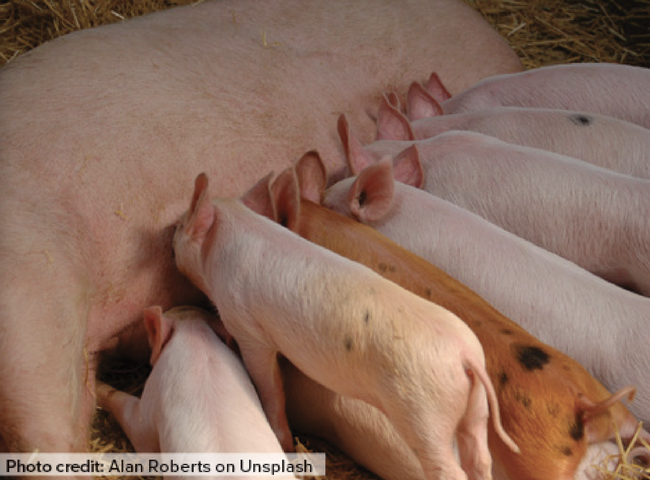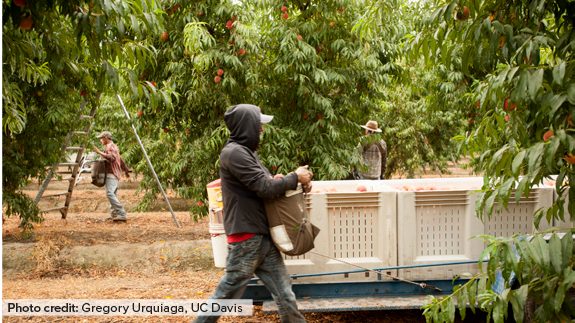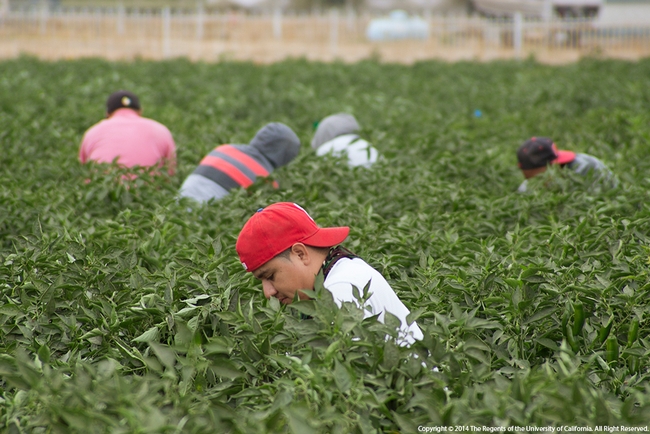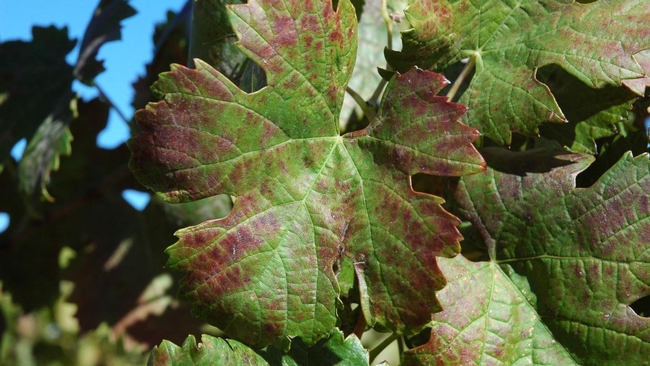
Posts Tagged: foundation
A U.S.-China trade war would cost California farmers
Loss of China's preferred trade status could hurt crop, dairy and livestock exports
The Biden administration recently announced large, increased tariff rates for Chinese electric vehicles, solar cells, semiconductors, and aluminum and steel products. This raises the possibility of another trade war with China that could impact agriculture.
Economists from UC Davis and North Dakota State University evaluated the potential implications of the U.S. revoking China's Permanent Normal Trade Relations (PNTR) status. They found that if China retaliated against a change in China's PNTR status, it could lead to a 9.5% increase in China's agricultural import tariffs, resulting in potential trade losses to California agriculture of around $1 billion annually.
California agriculture was hit hard by the 2018-19 trade war with China, and many industries have still not recovered from its effects. Despite this, there is increasing support in Congress for further restrictions on trade with China, with proponents asserting that China is not complying with the World Trade Organization's regulations.
The authors' research suggests that some product groups – such as horticultural products, dairy, livestock and meats – would likely experience even steeper than average increases in import tariffs.
“The impact on import tariffs for non-agricultural sectors would be even larger, with the average import tariff going up from 3.9% to 32.5%,” said co-author of the study Colin A. Carter, Distinguished Professor in the Department of Agricultural and Resource Economics at UC Davis.
For all California agricultural exports, they estimated an average decline in export value between 28.4% and 34.8% when comparing a scenario where China's PNTR status is revoked to one where it is not. This translates into an estimated trade loss of between $800 million and $1 billion, using 2023 California agricultural exports. Some crops that rely heavily on China for exports, such as tree nuts, would be more severely impacted by these effects, particularly considering that some of them are still subjected to residual tariffs from the 2018-19 trade war.
The last trade war between the United States and China led to significant decreases in crop prices and lost export opportunities. As co-author Sandro Steinbach, Associate Professor in the Department of Agribusiness and Applied Economics and the Director of the Center for Agricultural Policy and Trade Studies at North Dakota State University notes, “Once access to a market is lost, gaining it back is difficult, as the 2018-19 trade war has shown.”
To learn more about the potential implications of the United States revoking China's preferred trade status, read the full article by Carter and Steinbach: “Revoking China's Preferred Trade Status Would Be Costly for California Agriculture,” ARE Update 27(4): 1–4. UC Giannini Foundation of Agricultural Economics, online at https://giannini.ucop.edu/filer/file/1715033514/20982/.
ARE Update is a bimonthly magazine published by the Giannini Foundation of Agricultural Economics to educate policymakers and agribusiness professionals about new research or analysis of important topics in agricultural and resource economics. Articles are written by Giannini Foundation members, including University of California faculty and Cooperative Extension specialists in agricultural and resource economics, and university graduate students. Learn more about the Giannini Foundation and its publications at https://giannini.ucop.edu/.
Pork prices may reflect uncertainty around Prop 12
California's farm animal welfare act, approved in 2018, fully implemented in January 2024 after delays
Since being passed by California voters in 2018, Proposition 12, a farm animal welfare law, has faced a series of legal challenges that have led to uncertainty and delays in the implementation and enforcement of its requirements for the treatment of breeding pigs. A new Special Issue of ARE Update sheds light on its contentious path to eventual full implementation on Jan. 1, 2024, and analyzes how these delays have affected the retail and wholesale pork market.
Preliminary data suggest that Prop 12, and the uncertainty surrounding it, have led to an average retail price increase of 20% for covered pork products (i.e., those included under the regulation, mainly uncooked cuts of pork), as well as significantly higher prices for wholesale pork products during the implementation period and as hog farms nationally continue to adjust to the law.
Prop 12, officially known as the “Prevention of Cruelty to Farm Animals Act,” was approved by 63% of California voters. The law requires housing standards for egg-laying hens, veal calves and breeding pigs for the eggs or meat of these animals or their offspring to be sold in California.
While these standards first went into effect for egg-laying hens and veal calves as early as Jan. 1, 2020, many farms and businesses were hesitant to make large investments in the sow housing and traceability requirements until legal issues were settled for Prop 12-compliant pork.
On May 11, 2023, the U.S. Supreme Court upheld Prop 12. As a result, and consistent with rulings of the Sacramento Superior Court in California, California began requiring Prop 12-compliant pork on July 1, 2023, while allowing remaining non-compliant pork already in the supply chain to be sold until Jan. 1, 2024. Although full enforcement began almost eight months after the Supreme Court ruling, hog farms, almost all of which are outside California, continue to expand the supply of pork from hogs born of mother pigs that meet California housing and treatment standards.
“A long complicated process is not uncommon for major regulations,” said Daniel A. Sumner, a study co-author and distinguished professor in the UC Davis Department of Agricultural and Resource Economics.
Economists Hannah Hawkins, Shawn Arita and Seth Meyer with the U.S. Department of Agriculture's Office of the Chief Economist have been documenting prices and quantities of hogs and pork as the industry has adjusted to Prop 12. Using Circana retail scanner data, they found that in the past nine months covered pork products sold in California increased in price compared to the rest of the United States. While there was significant price fluctuation between the partial and full implementation dates, the initial price impacts were higher than would be expected after full adjustment, with price increases of 16% for bacon and 41% for pork loin.
Based on USDA Agricultural Marketing Service data, the authors found that wholesale prices for compliant pork cuts also increased substantially during the adjustment period, with an average price premium of 22%. Due to the many delays in implementation, Prop 12-compliant pork volumes are not yet sufficient to meet quantities that would have been demanded without these significant price increases. As the industry catches up to supply sufficient quantities of compliant pork meat to meet the California demand and a new market equilibrium is reached, both retail and wholesale prices may settle at lower price premiums. However, we may still be several months away from understanding the full impact of Prop 12 on meat and egg producers and consumers.
To learn more about the implementation of Prop 12 and its impact on the retail and wholesale pork market, read the full Special Issue of ARE Update 27(3), UC Giannini Foundation of Agricultural Economics, online at https://giannini.ucop.edu/filer/file/1710543749/20936/.
ARE Update is a bimonthly magazine published by the Giannini Foundation of Agricultural Economics to educate policymakers and agribusiness professionals about new research or analysis of important topics in agricultural and resource economics. Articles are written by Giannini Foundation members, including University of California faculty and Cooperative Extension specialists in agricultural and resource economics, and university graduate students. Learn more about the Giannini Foundation and its publications at https://giannini.ucop.edu/.
Did California’s ag overtime law help farmworkers?
After AB 1066, ag workers see average hours, wages fall
Proponents of California's agricultural overtime law, AB 1066, have called it a victory for farmworkers, while critics have asserted that it will harm the very people it was designed to protect. New research by Alexandra Hill, UC Cooperative Extension specialist and assistant professor in UC Berkeley's Department of Agricultural and Resource Economics, shows that, on average, there has been a decrease in worker hours and wages.
Her estimates suggest that in the first two years of its implementation, California's farmworkers worked a total of 15,000 to 45,000 fewer hours and earned a total of $6 million to $9 million less on their weekly paychecks than they would have without this law in place.
In 2016, California passed Assembly Bill 1066, legislation that removed existing overtime exemptions for farmworkers in the Fair Labor Standards Act. The FLSA is the federal law that mandates many employment conditions, including overtime standards. In non-exempt industries, it requires that employers pay 1.5 times an employee's regular pay rate for any hours worked beyond 40 hours per week.
Prior to AB 1066, agricultural workers in California were entitled to overtime pay for hours worked beyond 60 hours per week, but AB 1066 changed this beginning in 2019. The law mandated a gradual phase-in (over four years) of reduced overtime thresholds (lowering the weekly hours threshold by 5 hours/week each year) until agricultural employees are subject to the same overtime standards as workers in other industries (40 hours/week).
Many farmers feared that this new policy would drive food prices up, push them out of business, or force a faster transition to mechanization. Most reported that they would reduce hours for individual workers to remain below the new overtime standards and avoid paying the higher rates.
However, media, advocacy groups, and others heralded the law as a major win for farmworkers, as it would provide workers with more fair compensation for long workweeks. While long-term effects of the law for farmers and farmworkers remain to be seen, Hill's work sheds light on the early effects of the law on worker hours and earnings.
Using worker-reported hours from the National Agricultural Workers Survey both before and in the two years after the law went into effect (2019 and 2020), economist Hill explored the effects of AB 1066. Overall, she finds that worker hours and earnings decreased as an effect of the legislation.
Her work highlights that the share of workers working 56–60 hours/week, just below the old overtime threshold, decreased by roughly half. Most of these workers shifted to working fewer hours; the share working 46–50 hours/week, just below the new (as of 2020) overtime threshold, increased by roughly one-third. She found similar reductions in worker earnings.
The share of the workforce with higher weekly earnings (between $600 and $800/week) decreased by roughly one-third, with most of these workers shifting into a lower earnings bracket of $400–$500/week. These changes in hours and pay are consistent with employers behaving as they claimed they would – by cutting hours to avoid paying overtime rates.
Hill notes that these decreases in average wages and hours may be positive for those who want more leisure time and may – due to shorter workdays and weeks – improve workplace safety. However, she also warns that this can be detrimental for “workers and their families who were depending on this lost income to cover living expenses (and who) may now need to seek out second employment opportunities, negating these other benefits and adding the inconvenience of traveling between jobs.”
To learn more about the effects of AB 1066 on California farmworkers, read the full article by Hill: “California's Overtime Law for Agricultural Workers: What Happened to Worker Hours and Pay?” online at https://giannini.ucop.edu/publications/are-update.
ARE Update is a bimonthly magazine published by the Giannini Foundation of Agricultural Economics to educate policymakers and agribusiness professionals about new research or analysis of important topics in agricultural and resource economics. Articles are written by Giannini Foundation members, including University of California faculty and Cooperative Extension specialists in agricultural and resource economics, and university graduate students. Learn more about the Giannini Foundation and its publications at https://giannini.ucop.edu.
Congrats to 4 Outstanding UC Davis Student Entomologists: Recipients of NSF-GRFP Grants
Congratulations to the four student entomologists in the UC Davis Department of Entomology and Nematology who won National Science Foundation's Graduate Research Fellowship Program (NSF-GRFP) grants, a record high achievement for the department. A tip of the insect veil...
UC Davis to build new $5.25M greenhouse to protect U.S. grapevine collection
Project designed to prevent red blotch and other grapevine diseases
A new, $5.25 million greenhouse is being built on the University of California, Davis, campus to safeguard an important grapevine collection from red blotch disease and other pathogens.
The 14,400-square-foot greenhouse will have a vestibuled entry, be insect-proof and provide another level of disease protection. It is being spearheaded by Foundation Plant Services, or FPS, which provides the U.S. grape industry with high-quality, virus-tested grapevine plant material.
The program serves as the primary source for grapevine plant material distributed to nurseries under the California Department of Agriculture's Grapevine Registration and Certification Program, which provides the majority of grapevines planted in the United States. For the grape industry, it is essential to protect this material from disease-carrying insects and guarantee fast access to clean plant material.
“The program is considered the largest quarantine center for the grapevine industry in the United States,” said Maher Al Rwahnih, a plant pathologist and FPS director. “This is kind of a game changer for us.”
A history of serving the grapevine industry
FPS has maintained healthy grapevine planting stock on the UC Davis campus for more than 70 years in open fields at the Classic and Russell Ranch foundation vineyards. FPS scientists first detected grapevine red blotch virus at Russell Ranch in 2017. By 2021, an estimated 51.6% of the crop there was infected. Material from that vineyard is not being sold, and the site is now part of an epidemiological study to try to pinpoint how the disease is transmitted.
FPS pathologists have detected red blotch on less than 1% of the Classic vineyard crop. But it may not always be that way in the future.
“We don't know how long the Classic vineyard will remain clean,” Al Rwahnih said. “Every testing season, this is what keeps me up at night. We're not sure why it's happening in Russell Ranch and not the Classic vineyard.”
Once the greenhouse is operating, grapevines propagated from plant material from the Classic vineyard will be moved into the greenhouse, tested and verified as clean from disease. From there it will be sold to nurseries, which will grow additional plants to sell to growers.
Two greenhouses part of plan
Normally the foundation has 4,000 vines available, but the greenhouse will only house 2,000 vines, so inventory will be cut in half.
“This phase is just a starting phase,” Al Rwahnih said. “It's not sufficient for our needs.”
FPS plans to build another greenhouse in the next two to three years to increase capacity.
Industry groups and FPS identified greenhouses as the best way to protect the plants from red blotch and other pathogens transmitted by insects. They are also consulting with those same people on the grape varieties to include in the greenhouse.
“We have a large selection, and we need to make sure all the varieties that are important to industry are contained,” he said.
The first greenhouse is expected to be finished by the end of 2023.
Funding for the first greenhouse is coming from a variety of sources. The California Fruit Tree, Nut Tree and Grapevine Improvement Advisory Board, managed by the California Department of Food and Agriculture, contributed $4 million to the project. The California Grape Rootstock Research Foundation gave $500,000, Foundation Plant Services with UC Davis is funding $450,000, and the California Grape Rootstock Commission gave $100,000.
“This is crucial for the grapevine industry, and we are very grateful for the support,” Al Rwahnih said.






